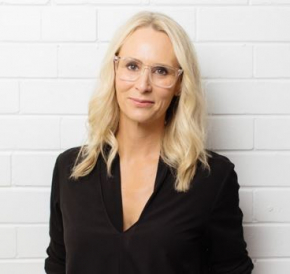Nicole Jameson – The New Daily
Digital Strategist | Director of Dark Horse Agency | CEO of The Social Kit
Communication key when setting boundaries for children in a digital age.
Navigating social media can be tough, especially as a concerned parent – while setting boundaries is key, it’s also important to not be too hard on yourself.
Nicole Jameson has two boys – aged 11 and 14 – and she has a few boundaries for her kids.
Ms Jameson works in social media as the director of Dark Horse Agency in Perth, but said even she doesn’t always get it right.
“There are a lot of different ways I’ve gotten things wrong,” she told The New Daily.
“There are three or four ways that I have learned, where I’ve worked consistently when just trying to manage their devices.”
She sometimes gives her boys free rein, and doesn’t feel guilty about it, but other times she’s restricting their social media and device usage.
Every time the rules surrounding her children’s phones change, there’s a family meeting, which involves “sitting down, having a chat about it to make sure that they understand the rules are changing and what the rules are changing to and why they’re changing”.
“That whole preparation is part of what will make it work in the long run. Getting them involved and communicating with them is ultimately what’s going to work,” she said.
Social media boundaries
Establishing boundaries isn’t a one size fits all type of thing – what works for Ms Jameson might not work for every parent trying to protect their children online.
At home, there are rules aimed at minimising the time her sons are on their devices. She wants them to be active and able to have a real-life conversation.
For example, before 9.30am and after 5pm, devices can’t be used. Overnight their phones, laptops and iPads are left downstairs in the kitchen.
Her boys can earn their right to use their devices by getting outside or doing some work around the house. This can change, depending on whether your child is on school holidays.
She said it’s important to have conversations with children before changing the rules.
“A lot of us are working and managing families as well – you forget to have those early conversations, and kids need time, like teabags.
“They need time to percolate and accept the idea and go ‘OK, well this is it’.”
She also checks her children’s phones. Everyone in the Jameson household has the same passcode. But you don’t need to snoop, you can just ask your children to see their phone, or ask to be shown how to use an app.
“They love to be the educator, and it’s a way of getting a window into how they use it as well,” she said.
Changing the rules
The boundaries can change over time.
Before Ms Jameson’s children were old enough, she had mapped out designated ages at which they would be allowed to use social media. Now that has changed.
“When you’re living through it, it can be a different thing,” she said.
“I think there is a lot of fear around kids on social media, but there are some platforms that they literally just use as chat, like Snapchat, and they’re not using it for very much else.”
Having that communication early on will help parents spot something that’s a bit off sooner rather than later.
It’s also not so much about age, when it comes to kids on social media, but how mature they are.
If they’re mature and they have good self-esteem, going on a platform like Instagram might be OK, as long as the activity is monitored.
For Ms Jameson, her children are allowed on Instagram and Snapchat, as that is where they chat to their friends.
One website she says parents should be wary of is Omegle, where strangers are randomly paired for a video chat.
“I would recommend having some restrictions about that one,” she said, also warning against apps where “insidious” chat might happen, like Telegram.
“I don’t think there is one age or one platform that is safe for kids. Ultimately, if you make it too safe, they’re not going to want to be on it. They want to be on what we’re on. They want to be on the cool things and, let’s be honest, they’re probably cooler than us.”
There are also times where parents have no control, such as at sleepovers, so it’s important children know the boundaries.
“I always say, I want you to talk to me about strange behaviour, not strange people,” she said, adding children often think everyone is their friend on social media.
Know who’s influencing them
The rise of social media saw the rise of influencers – some good, some very bad.
Although neither of her children followed him, Ms Jameson decided to get ahead of it and bring up Andrew Tate at the dinner table, knowing he was popping up on the feeds of young men.
Given his content was everywhere or potentially some of her children’s friends may have been following him, she knew it needed to be spoken about.
“[Tate] would be a discussion point, even outside of me not being aware if they’re following him or not,” she said.
If she had daughters, Ms Jameson would probably be warning them against the latest influencer scam promising weight loss and that everything on social media is fake.
She says it’s important parents arm themselves with information and see who their children are following; if you don’t know who someone is, then Google them.
Don’t feel guilty
The last thing Ms Jameson wants is for parents to feel guilty about what they are or aren’t doing.
“I don’t want another reason for parents to feel guilty. Because there’s so much about already, but also I think just letting people know that having that conversation doesn’t mean it can save you a lot of wars in the long run,” she said.
If there’s a need to punish children for violating certain boundaries being set around phones, Ms Jameson suggests letting children pick out something suitable ahead of time.
“Kids are always more brutal than we can ever be on their devices,” she said.
“Ultimately you’ve got to remember that you own the contract unless they are 18 plus – you still have control.”
https://thenewdaily.com.au/life/tech/2023/01/09/social-media-boundaries-parents/
